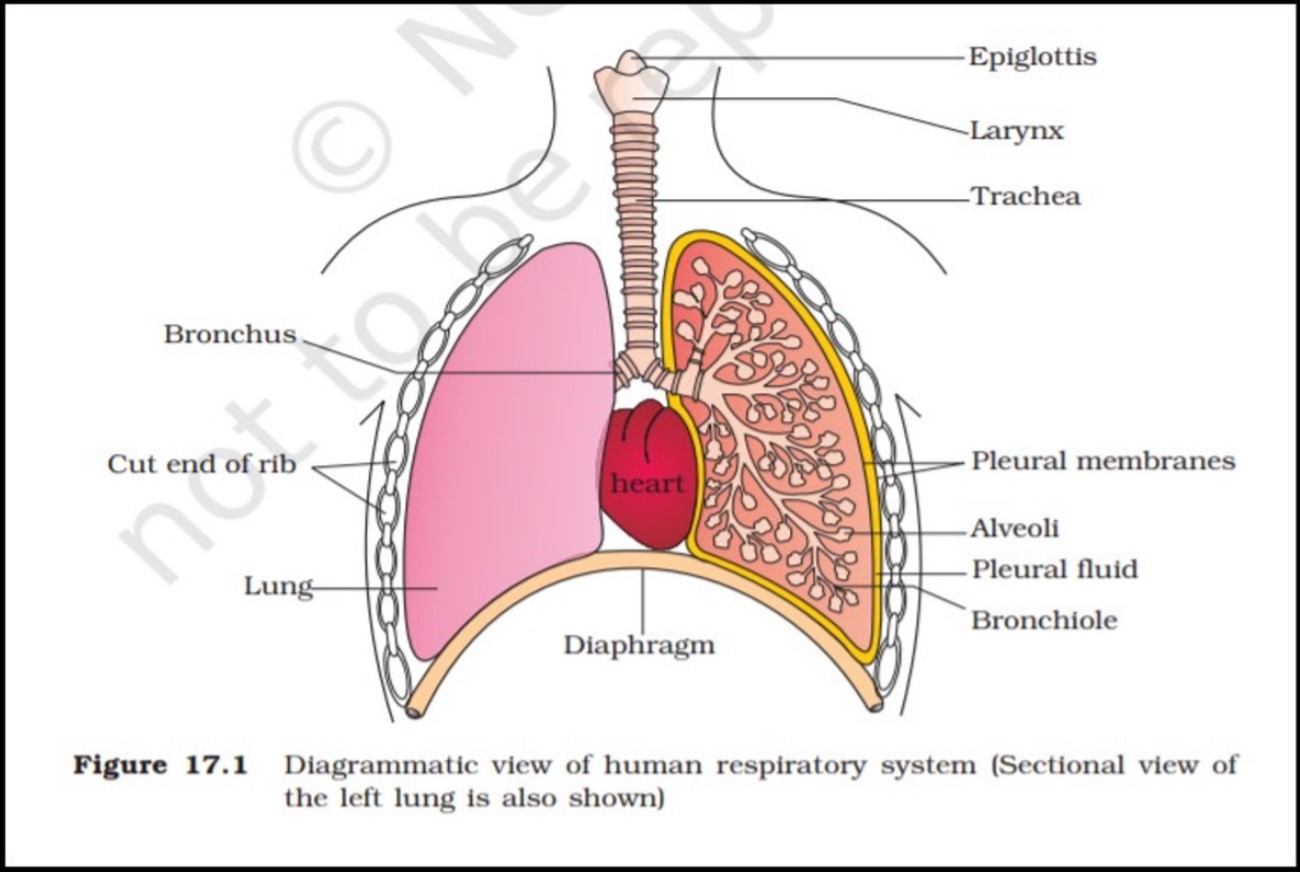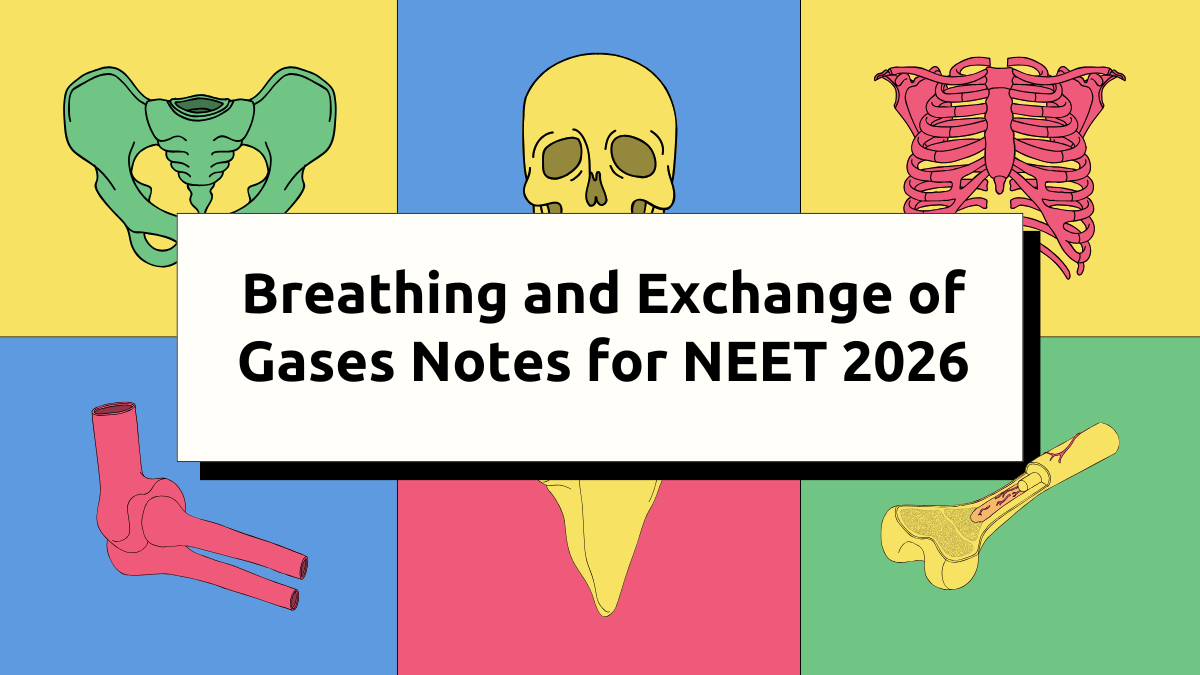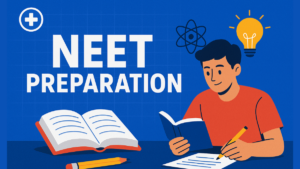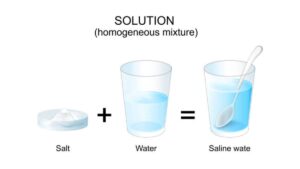The mechanism of breathing and gas exchange is necessary to keep the organism alive, as it provides the intake of oxygen and the release of carbon dioxide. NEET 2026 candidates would gain a lot from this chapter, as it constitutes a large part of the Human Physiology unit. On average, 2–3 questions are asked from this chapter every year, which makes it a very important chapter for scoring. This article will provide you with Breathing and Exchange of Gases NEET Notes 2026, weightage, and important tips to score well.
Breathing and Exchange of Gases
Breathing & Exchange of Gases is an important chapter of Class 11th Biology. The chapter essentially covers the human respiratory system, respiratory volumes and capacities, and disorders of the respiratory system. As we know, energy is necessary for us to carry out our daily tasks. This energy is produced by the breakdown of different food ingredients, such as proteins, carbs, lipids, etc.
Catabolic activities need oxygen to occur, yet they also emit carbon dioxide. Therefore, the body needs a constant exchange of gases; carbon dioxide is expelled from the body, and oxygen is taken in from the atmosphere. We refer to this gas exchange process as respiration or breathing.
Breathing and Exchange of Gases Notes PDF
Biology is a very important subject for the NEET preparation. To score well in the NEET Exam, students have to focus more on some important topics like the respiratory system, Avoili, Diagrams, and the mechanisms of gas exchange. To get prepared for the NEET Exam 2026, candidates must practice PYQ to go through with Exam pattern and marking Scheme. Here we are providing the notes on Breathing and Exchange of Gases. Students can download the notes from the link mentioned below:
Click Here for Breathing and Exchange of Gases Notes PDF for NEET
Breathing and Exchange of Gases Notes
The notes on some important topics for the Breathing and Exchange of Gases are given below. These notes will help students gain conceptual clarity on important topics for class 11.
Human Respiration Process
The breathing and gas exchange processes are a series of interrelated mechanisms that help the body produce energy and support respiration. These processes are given herein.
- Both the emission of alveolar air that is high in carbon dioxide and the uptake of oxygen from the atmosphere occur during pulmonary respiration.
- The diffusion of carbon dioxide and oxygen over the alveolar membrane is greatly aided by it.
- The blood carries the gases, carbon dioxide and oxygen, throughout the body.
- Another stage of diffusion occurs at the tissue level, where oxygen diffuses into the tissues from the blood and carbon dioxide diffuses into the tissues from the tissues.
- Cellular respiration, the process’s last stage, produces carbon dioxide as a byproduct while using oxygen to catabolize food and release energy.

In a nutshell, breathing and gas exchange entail the following:
- Cardiac respiration
- Carbon dioxide and oxygen diffusion
- Gases’ transport by the blood
- Cellular respiration
Breathing Mechanisms
Expiration: A high intrapulmonary pressure relative to ambient pressure causes the expulsion of alveolar air. When the intercostal muscles and diaphragm relax, the pressure rises. Normal postures are regained by the diaphragm, sternum, and ribs.
Inspiration: The reduced intrapulmonary pressure causes atmospheric air to be drawn inside. Contraction of the diaphragm and intercostal muscles increases the lung volume. As the air enters the lungs, the sternum and ribs rise.
The muscles in the belly can assist in increasing inspiration and expiration volume. Breathing occurs 12–16 times each minute on average.
A device used to measure the amount of air breathed and expelled is a spirometer.
Respiratory Volumes and Capacities
Different types of respiratory volumes and capacities of ling help determine the normal functioning of the lungs. These volumes and capacities are given below.
Tidal Volume (TV): The amount of air that is generally inspired or expired in normal breathing. It is about 500 ml on average.
Inspiratory Reserve Volume (IRV): It is the extra air that can be forced by inspiration. It is about 2500 m to 3000 m. Inspiratory Reserve Volume (IRV) along with Tidal Volume (TV) makes Inspiratory Capacity (IC), i.e., IC = TV + IRV.
Expiratory Reserve Volume (ERV): The extra air that can be forced by expiration is known as Expiratory Reserve Volume. It is approximately 1000-1100 ml in an average person. Expiratory Reserve Volume (ERV) together with the Tidal Volume makes Expiratory Capacity (EC), i.e., EC = TV + ERV.
Residual Volume (RV): It is the air left in the lungs following forced expiration. It is about 1100–1200 ml. The air in the lungs following a typical expiration is known as functional residual capacity (FRC), which is represented by residual volume and ERV combined (ERV + RV).
Vital Capacity: The maximum amount of air that can be inhaled or exhaled following forced expiration or inspiration is known as vital capacity. VC = IRV + ERV + TV.
Total Lung Capacity (TLC): Total Lung Capacity is the sum of the Residual Volume (RV) and Vital Capacity (VC). It represents the maximum amount of air that the lungs can hold.
Respiratory Modes and Organs
| Mode of gaseous exchange | Respiratory organs | Examples |
| Cutaneous respiration | Skin | Through body surface- poriferans, coelenterates, flatworms |
| Moist cuticle- Earthworms | ||
| Moist skin- Amphibians (frogs) | ||
| Tracheal | Spiracles | Arthropods (cockroaches) |
| Branchial respiration | Gills | Aquatic animals- arthropods, molluscs, and fishes |
| Pulmonary respiration | Lungs | Terrestrial vertebrates, including humans |
Breathing and Exchange of Gases NEET Notes Weightage
During preparation, students have to know the weightage distribution, which will help them to understand the scoring topic, so they can focus on that topic more. On average, 2–3 questions are asked from this chapter every year. The last five years’ weightage distribution is mentioned below. You can go through it:
| Year | No. of Questions | % of Zoology (45 Qs) | % of Whole Paper (180 Qs) |
|---|---|---|---|
| 2021 | 2 | 4.44% | 1.11% |
| 2022 | 3 | 6.67% | 1.67% |
| 2023 | 2 | 4.44% | 1.11% |
| 2024 | 2 | 4.44% | 1.11% |
| 2025 | 2 | 4.44% | 1.11% |
| Total (2021–25) | 11 | — | — |
| Average per Year | 2.2 | 5% | 1.2% |
Breathing and Exchange of Gases NEET Important Topics
Students can prepare these topics at the last minute from the PDF given above for the NEET exam on breathing & exchange of gases.
1. Respiratory Organs
- Human Respiratory System
2. Mechanism of Breathing
- Respiratory Volumes and Capacities (Tidal Volume (TV), Inspiratory Reserve Volume (IRV), Expiratory Reserve Volume (ERV), Residual Volume (RV), Inspiratory Capacity (IC), Expiratory Capacity (EC), Functional Residual Capacity (FRC), Vital Capacity (VC), Total Lung Capacity (TLC))
3. Exchange of Gases
4. Transport of Gases
- Transport of Oxygen
- Transport of Carbon dioxide
5. Regulation of Respiration
6. Disorders of the Respiratory System
- Emphysema
- Asthma
- Occupational Respiratory Disorders
Preparation Tips for Breathing and Exchange of Gases Notes for NEET
- NCERT First: Review every line of information, especially diagrams are important from NCERT.
- Create a formula sheet: Write down all equations related to partial pressures, oxygen content, CO₂ transport, and respiratory volumes.
- Making handwritten notes helps in remembering important information.
- Previous years’ questions: Most of the last 10 years ‘ NEET questions of this chapter will repeat with changes.











 NEET Preparation Strategy 2026: Detailed...
NEET Preparation Strategy 2026: Detailed...
 Free NEET Sample Papers 2026 PDF | Downl...
Free NEET Sample Papers 2026 PDF | Downl...
 Salt Analysis NEET Notes, Check Importan...
Salt Analysis NEET Notes, Check Importan...














